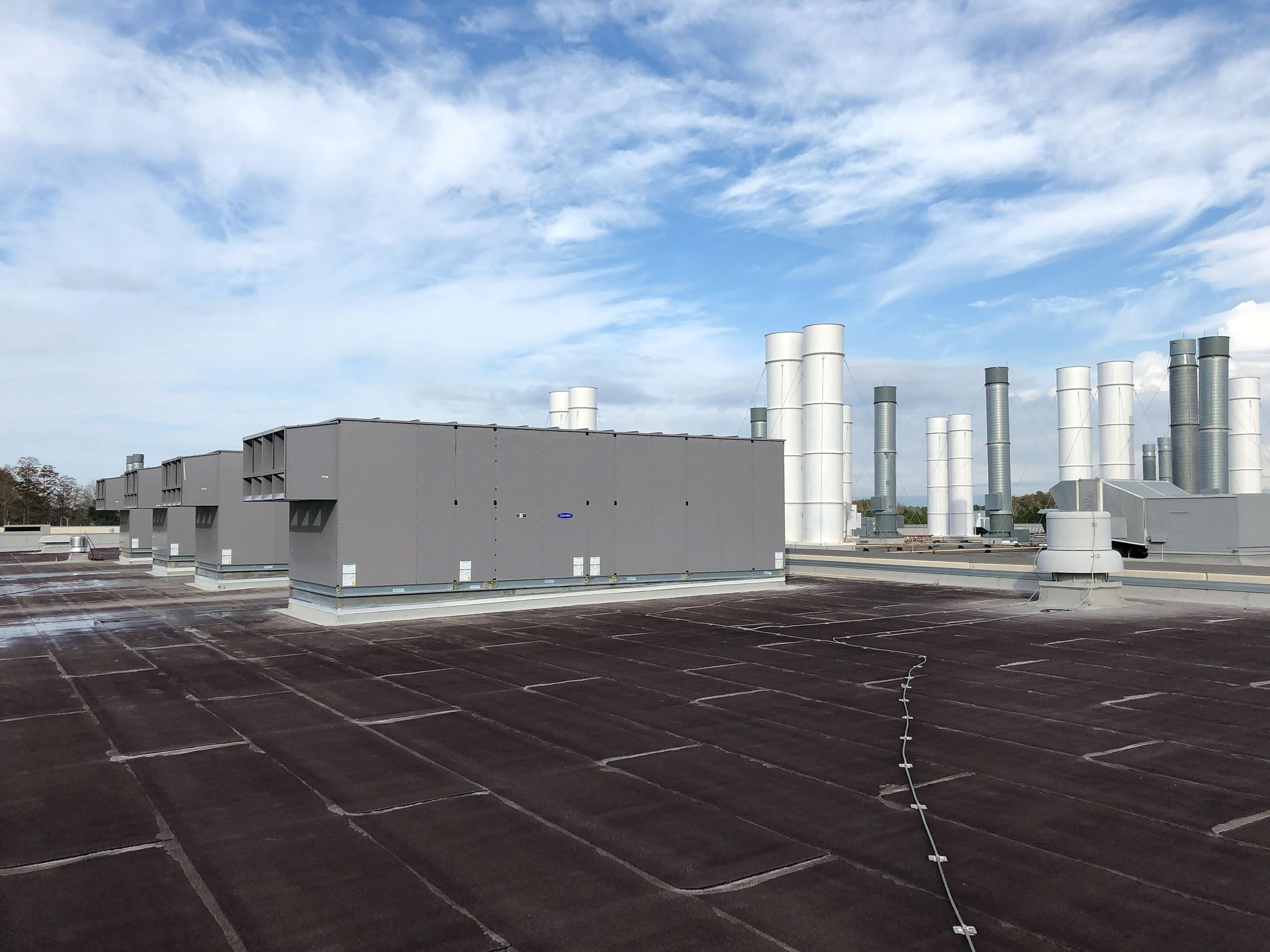Keller Mechanical & Engineering delivered turnkey design, engineering and construction for state of the art climate and dust-controlled mold-bays for one of America’s most innovative boat manufacturers.
Overview
Established in 1925, Nautique, an American boat manufacturer with a reputation for industry leading innovation, designs and manufactures boats primarily for waterskiing, wakeboarding and wakesurfing. With models in the Super Air Nautique and Ski Nautique lines, they are widely considered the gold standard in the inboard towboat market.
Located on 137 acres in Orange County, Florida, Nautique Boat Company world headquarters includes two test lakes and a manufacturing facility enclosing over 270,000 square feet of state-of-the-art design, fabrication and manufacturing space.

From the process of design, fabrication, and testing through completion and delivery, every Nautique is manufactured 100% at company facilities inside the U.S.
As an integral first step in the boat manufacturing process, a safeguarding gelcoat (specialty watercraft polymer serving as a protective barrier against UV rays, salt water, and other elements) is applied to the newly fabricated hulls of Nautique vessels by laminators in a three-pass process from within dust and temperature-controlled mold-bays.
Once spec is met on gelcoat, fiberglass skin coat is then applied, tested to spec, and then the fiberglass bulk layer is applied to give the Nautique’s boat legendary boat strength.
In order to facilitate Nautique’s innovative gelcoat application process, Keller was approached by Nautique to engineer a first-of-its-kind solution that met three major design requirements: Safety, Temperature and draft control, and modularity.
Requirement 1: Safety
Operational safety is the primary consideration for the gelcoat processes, as Natiuque is required to meet or exceed protective occupational exposure criterion laid out by OSHA for operators working in an environment with potential occupational exposures to fugitive styrene emissions–such as those which evaporate from gelcoat resins.
The OSHA PEL (Permissible Exposure Limit) for styrene is 100 ppm for an 8-hour TWA (time-weighted average) – meaning the limit applies to the average exposure during a work day of up to 10 hours and a work week of up to 40 hours exposure, with a ceiling limit of 200 ppm. The ceiling limit restricts exposures for any portion of the work day1.
Keller engineered a continuous variable air filtration control system that operates at a maximum performance setting of one cycle (replaces 100% of the air in gelcoat mold bay) in less than one minute and up to 70 cycles per hour, and at a minimum performance setting completes a cycle in 1.5 minutes and no less than 40 cycles per hour.
Working closely with environmental specialists at Nautique, routine safety measurements were conducted throughout the construction process in order to ensure the levels of styrene and other compounds in Nautique bays are maintained within OSHA PELs should the operator’s PPE systems (suits, headgear, etc.) fail.
Whether operating at a minimum or maximum cycle rate, Keller’s filtration system exceeds OSHA PEL standards by a factor of 3x and 6x ppm respectively.
That’s a 300% to 600% improvement over regulated safety requirements!
Requirement 2: Temperature and draft control
While controlling temperature and humidity is essential to the consistent application of gelcoat, it is also essential to maintain ideal working conditions for gelcoat laminators.
Variable room air changes require enhanced temperature control systems to ensure equal amounts of heat and cooling are imparted in order to maintain optimum application temperatures of the gelcoat, mold, and environment (70–90 °F) while providing an ergonomic, low-draft working environment for gelcoat laminators.
Keller engineered a chilled water cooling system that maintains temperatures between 77–85 °F. Not only does this keep the gelcoat resin at an appropriate temperature but it also keeps the employees working very comfortably, allowing them to be more efficient in their work.
Happy boat builder – happy boat.
Requirement 3: Modularity
At any given time, between one and twelve gelcoat bays could be in operation. Keller engineered the bays as a flexible, energy efficient, modular system with variable HVAC and industrial controls for the air distribution, change cycle frequency, and climate control.

Whether it’s one, two, or twelve bays in operation, Natique can perform at maximum efficiency while maintaining safety and temperature control requirements utilizing a modular 100% make-up air HVAC system.
The Outcome: A better Nautique
Engineering a safe, efficient and ergonomic work space for the Nautique laminators while maintaining optimal conditions for Nautique’s processes, results in a perfect, consistent gelcoat finish every time.
After the successful completion of this project, Keller was re-engaged by Nautique and is participating in ongoing facility optimization and expansion projects including lamination, fabrication, and boat manufacturing processes.
1 OSHA PEL at time of project completion per OSHA Occupational Chemical Database: Styrene (Vinyl Benzene; Phenylethylene)